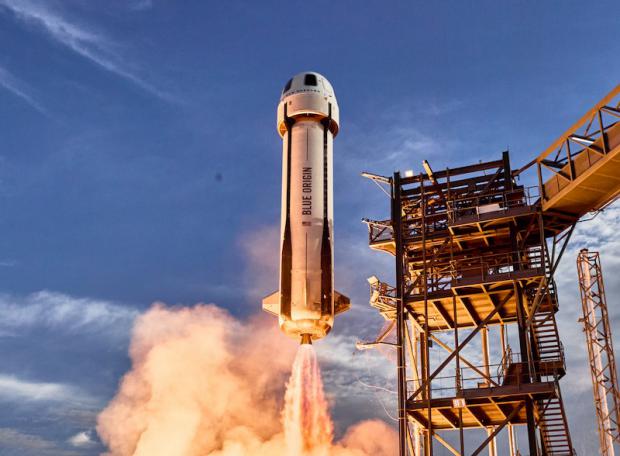
Breaking News
 Windows 10 is DEAD in 2025? -- Here's How I Run It SAFELY Forever (No Updates)
Windows 10 is DEAD in 2025? -- Here's How I Run It SAFELY Forever (No Updates)
 GENIUS ACT TRIGGERED: The Biggest BANK RUN in History is COMING – Prepare NOW
GENIUS ACT TRIGGERED: The Biggest BANK RUN in History is COMING – Prepare NOW
 European Billionaires Funneled $2 Billion into NGO Network to Fund Anti-Trump Protest Machine
European Billionaires Funneled $2 Billion into NGO Network to Fund Anti-Trump Protest Machine
 Japan Confirms Over 600,000 Citizens Killed by COVID mRNA 'Vaccines'
Japan Confirms Over 600,000 Citizens Killed by COVID mRNA 'Vaccines'
Top Tech News
 Japan just injected artificial blood into a human. No blood type needed. No refrigeration.
Japan just injected artificial blood into a human. No blood type needed. No refrigeration.
 The 6 Best LLM Tools To Run Models Locally
The 6 Best LLM Tools To Run Models Locally
 Testing My First Sodium-Ion Solar Battery
Testing My First Sodium-Ion Solar Battery
 A man once paralyzed from the waist down now stands on his own, not with machines or wires,...
A man once paralyzed from the waist down now stands on his own, not with machines or wires,...
 Review: Thumb-sized thermal camera turns your phone into a smart tool
Review: Thumb-sized thermal camera turns your phone into a smart tool
 Army To Bring Nuclear Microreactors To Its Bases By 2028
Army To Bring Nuclear Microreactors To Its Bases By 2028
 Nissan Says It's On Track For Solid-State Batteries That Double EV Range By 2028
Nissan Says It's On Track For Solid-State Batteries That Double EV Range By 2028
 Carbon based computers that run on iron
Carbon based computers that run on iron
 Russia flies strategic cruise missile propelled by a nuclear engine
Russia flies strategic cruise missile propelled by a nuclear engine
 100% Free AC & Heat from SOLAR! Airspool Mini Split AC from Santan Solar | Unboxing & Install
100% Free AC & Heat from SOLAR! Airspool Mini Split AC from Santan Solar | Unboxing & Install
Blue Origin Has a Critical Flight in Three Days That Will Determine Launches in 2026

A backup launch attempt is set for November 8. The mission will launch the NASA ESCAPADE spacecraft for Mars from Cape Canaveral Space Force Station in Florida.
They have not yet successfully landed or reflown any booster. If they cannot master the landing and fast reuse of a booster in 2026 then they can at most have four launches in 2026. One for each booster. If there is a crash or flight problem with either the first or second stage in any flight there will be an FAA investigation that removes 25-50% of the possible flights in a year.
They need to land a booster, inspect it and qualify for a reflight, prepare for reflight and then refly it.
This critical flight will determine if Blue Origin has 2 to 12 launches in 2026. They have to be able to cleanly fly and land the booster stage. This will determine if they can reuse the booster every 6 months. Any flight problems that leads to an FAA investigation will delay the next launch by 3-6 months. I would estimate that if the flight has any major problems then they will have
Blue Origin is scaling BE-4 manufacturing aggressively at their Huntsville, AL facility to support New Glenn and ULA's Vulcan. The current production rate is targeting ~50 BE-4 engines per year and they will try to ramp to 100-150 in 2027 and later. This production level supports ~7-14 New Glenn boosters annually at full tilt plus Vulcan's 2 per flight. The New Glenn boosters need 7 engines. 49 engines would be needed for those boosters. There have been three Vulcan rocket flights so far and four are planned for the last two months of 2025. There are six launches planned for 2026 and ULA targets 20 launches per year. This means about 20 BE-4 engines for the remainder of 2025 and for 2026. This will increase to 40 BE4 engines per year.
They have built two boosters in 2025 and will build 2 more in 2026. Losing boosters means they cannot be reused. Four boosters with one reflight each would enable 8 launches in 2026. They would need two reflights of each booster to reach 12 launches.
If Blue Origin cannot land and reuse boosters and have clean flights in November and again for every launch in 2026, then there is very low chance that they will get a NASA $2 billion restart of their lunar landing program. The Lunar landing program will add 5 more challenging launches with several unmanned missions to the moon. If they are still showing problems getting beyond 2-4 launches per year, then you could not add 5 launches and expect to do them in a timely fashion.



